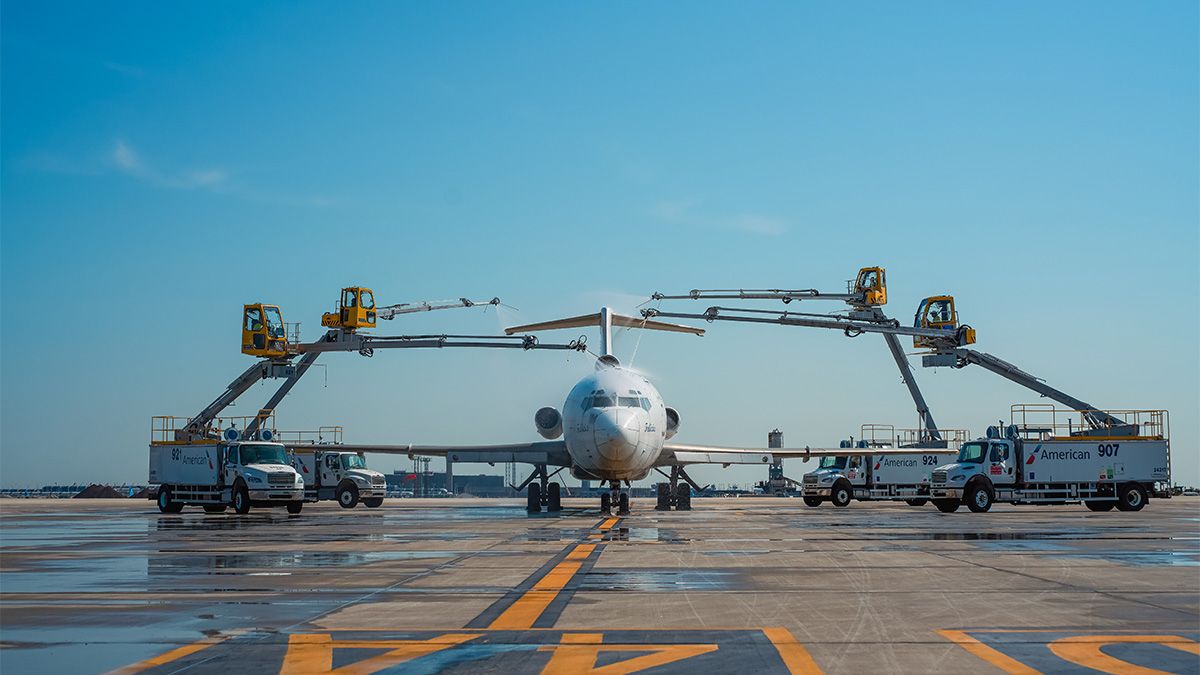Source: American Airlines

Parts of the U.S. are still feeling nearly triple-digit temperatures, but the American team is well underway with training to prepare for deicing season, which officially starts Oct. 1. Because every minute counts when it comes to getting an aircraft out on time, American’s specially trained deicing teams work to free aircraft of snow, ice or frost in an average of nine minutes.
Each year, long before the first leaves start changing colors, American conducts deicing training to ensure thousands of team members can do this important work thoroughly and safely — helping customers get on their way. Just as a car must defrost before heading out on the roads, an aircraft needs to deice before taking to the skies.
Gene Herrick, American’s Manager of Deicing at Chicago O’Hare International Airport (ORD), helps lead American’s largest deicing location and one of the busiest deicing operations in the world, deicing upwards of 10,000 flights at ORD in one season. Like other airlines, American follows deicing guidelines published by the Federal Aviation Administration (FAA), Transport Canada (TC) and European Union Aviation Safety Agency (EASA).
The deicing process continues to get more efficient thanks to the introduction of new procedures, such as electronic spray records and tracking tools introduced last year. This season at ORD, the team is able to deice eight narrowbody aircraft at once — doubling capacity from last year at the central deicing facility.
It can take anywhere from 60 to a few hundred gallons of deicing fluid per aircraft, depending on how much snow or ice has accumulated. Each aircraft is sprayed either at its gate or at a centralized deicing pad, depending on the airport. In addition to deicing American aircraft, the deicing team at ORD also lends a hand to our oneworld partners by providing deicing services for their aircraft.
The length of time it takes to deice an aircraft is dependent on how much frost, snow or ice has accumulated. While team members would like to deice as quickly as possible, everything is done with the safety of customers and team members as the number one priority.
“We’re waiting for the first snowflake to fall, whether it happens in October or it happens in December,” Gene said. “We’re ready.”
Two types of fluids are part of the process: Deicing fluid is used when frost, snow or ice is already present on the aircraft. It’s orange and heated to 140 degrees. Anti-icing fluid is preventative. It’s green and keeps ice from penetrating and adhering to critical and lifting surfaces, such as the wings. Glycol is the key ingredient in both fluids.
